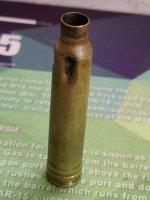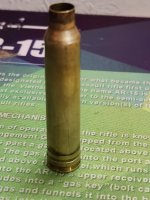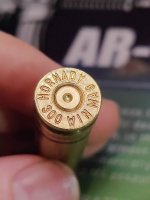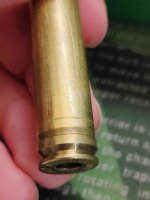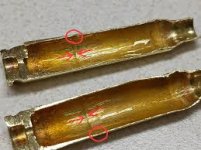Hornady brass, 5 cycle with 79.4 grain StaBALL HD with 208 ELDM with speed 2940 fps.
Rem 700 LR SS 26" 1 - 10.
Around .030" from lands ( I think so )
Brass deformed and crack formed near the belt.
No visible signs of pressure on primer. Should look on photo to understand what happens.
The difference in 5 cycle I switched to S&B magnum primer, before for 4 cycles used Ginex.
My question is what do you think went wrong? Or 5 cycle is the lifetime of the Hornady brass?
What you would suggest to not get it again?
Rem 700 LR SS 26" 1 - 10.
Around .030" from lands ( I think so )
Brass deformed and crack formed near the belt.
No visible signs of pressure on primer. Should look on photo to understand what happens.
The difference in 5 cycle I switched to S&B magnum primer, before for 4 cycles used Ginex.
My question is what do you think went wrong? Or 5 cycle is the lifetime of the Hornady brass?
What you would suggest to not get it again?

